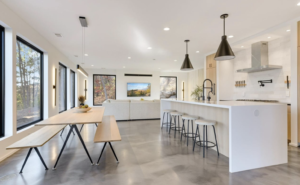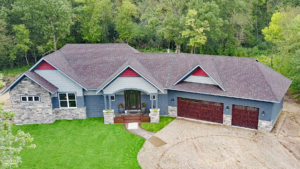The holidays are approaching quickly, and you are the host. So how do you create the ideal home entertainment setup from the start? Here are a few Holiday Entertaining Tips and steps you can take to ensure you stay organized, happy and sane.
1. Create a Welcoming Entryway
When you’re entertaining guests at home, your entryway is often your guests’ first impression. Naturally, you want that first impression to be a good one, so making your space feel as inviting as possible is a good start. To make your guest feel more comfortable, consider adding these items to the entryway of your home:
- Ample hooks for coats and purses
- Plants or poinsettia to create a festive mood.
- Some type of seating for guests to remove shoes if requested — a bench works well.
- A rug that with a holiday flare
2.Get Creative with Tables and Seating
If seating and surfaces are in short supply, you’ll need to get creative. Try some throw pillows to use as boho-inspired seats on the floor. Alternatively, you can buy in a few ottomans that can double as tables or seating as needed. Bar carts are a great investment as you can use them to serve a small or larger group. This also work to provide a portable table for serving drinks and food wherever you are in the house.
3. Set the Mood with the Right Lighting
If your home is equipped with nothing but harsh overhead fluorescents, it might be time for an upgrade, unless you are going for the cafeteria style dining, which changes are you are not. Add an interesting lamp and dress up tables and entryways with string lights. Always opt for warm-colored bulbs to create a cozy and relaxing environment. If you’re going for a dimly lit vibe, try using candles instead of light bulbs wherever it’s safe to do so.
4.Utilize Your Kitchen Island
When it come to holiday entertaining guests at home, your kitchen island will serve you well, literally. If you’re hosting a dinner party or serving any type of food, the island will act both as your prep station and your buffet table. If your kitchen is large enough, you might want to create an area for your guests to sit around the island as well.
5.Prepare a Guest Bed
Depending how the party goes, you may have an unexpected overnight guest. Be sure to have clean bedding on hand and invest in a decent guest bed setup. If you don’t have a spare room right now, look for a pull-out sofa or even a high-quality air mattress. Make a note to blow it up ahead of time.
6.Party Preparation
Once you’ve got your home set up for entertaining guests, the planning and prep work can truly begin. Here are some more tips to keep in mind so your next holiday party goes off without a hitch:
- Create a signature cocktail with minimal ingredients and prepare it ahead of time.
- Have a designated bar area where guests can help themselves.
- Don’t aim to cook a full dinner — the last thing you want is to be stuck in the kitchen all night trying to time a perfect meal. Most people will be happy with hearty snacks and charcuterie, beside they’ll want you to join the party.
- Don’t forget about scents and sounds. Light a few candles and play some low-volume music or upbeat music to set the vibe.
Use all the functions of your home to be sure you pull out all the tricks for holiday entertaining—as it is essential for those who love to host.
Now you can relax knowing you are ready and prepared for the upcoming holiday family get together and/or holiday party.
Happy Holidays to You and Yours!
Your Friends at Tice-Hause Design/Build














